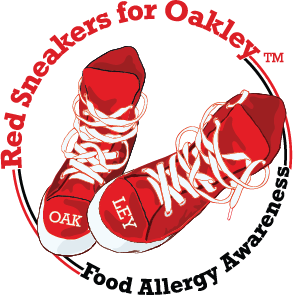6 Key Steps To Do In Case of a Home Anaphylaxis Emergency
During an anaphylactic reaction, time is of the essence. It is essential to act quickly and confidently, so being prepared is key. Here are 6 steps to take:
1️⃣ ADMINISTER EPINEPHRINE
Once you’ve identified symptoms of anaphylaxis, immediately use the prescribed epinephrine auto-injector (ie: EpiPen or AuviQ). Administer the injection into your child's outer thigh muscle. Hold the injector in place for several seconds before removing it. Make a note of the time.
2️⃣ CALL EMERGENCY SERVICES
Immediately call 911. Inform them about the situation. Stay on the line and follow their instructions.
3️⃣ STAY CALM
During an emergency, it is natural to feel panicked, but is it also important to breathe and do your best to stay calm. Reassure your child and keep them as calm as possible. Anxiety can worsen symptoms, so try to create a soothing environment.
4️⃣ MONITOR BREATHING
Encourage your child to lie down with legs elevated and keep still. Keep a close eye on your child's breathing pattern. Loosen any tight clothing around your child's neck, chest, or waist. If your child stops breathing or loses consciousness, be prepared to perform CPR. Emergency services can guide you through CPR over the phone if needed. Anaphylactic reactions can sometimes lead to vomiting, so if your child vomits, turn their head to the side to prevent choking.
5️⃣ DO NOT HESITATE TO USE ADDITIONAL EPINEPHRINE
If your child's symptoms worsen or do not get better after administering the first dose of epinephrine, do not hesitate to use a second dose. Make a note of the time when the next dose was given.
6️⃣ STAY WITH YOUR CHILD
Do not leave your child's side. Reassure them and keep monitoring their condition until medical professionals arrive or you can get your child to the ER.
DISCLAIMER: Red Sneakers for Oakley does not offer medical advice. All medical information is obtained from reliable websites, experts, and publishers. It is essential to consult with your physician or other qualified healthcare professionals for advice.
